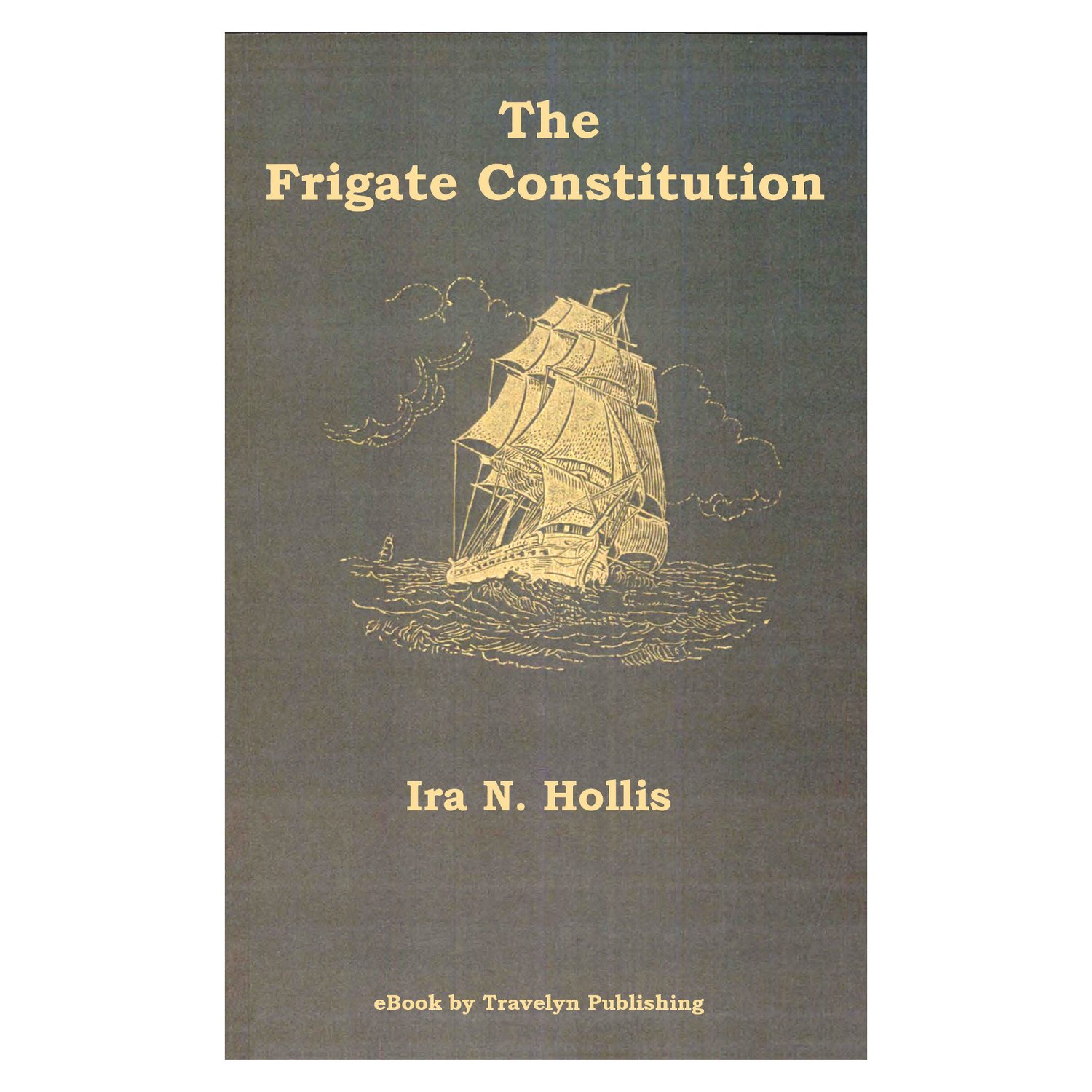
The Frigate Constitution
Published originally in 1900 and based upon a magazine article the author wrote to commemorate the 100th anniversary of the Constitution’s launch, this illustrated non-fiction book tells the entire history of this famous warship from the enactment of her authorization and funding in Congress to her eventual retirement from active patrolling and fighting on the high seas when steam-powered warships became the standard. More than just a dry account of facts, Mr. Hollis explains why the USS Constitution, “the world’s oldest commissioned naval warship still afloat,” is such an important symbol of the United States as a nation. By achieving victories over English warships at a time when the English dominated the world’s seas and seemed invincible, the Constitution gave hope and identity to a wavering young nation that was getting spanked militarily on land.
This digital version includes 45 illustrations from the original book, of various types and from various sources.
The author, Ira Nelson Hollis (1856–1930), was an American mechanical engineer for the U. S. Navy, professor of engineering at Harvard, and 5th president of Worcester Polytechnic Institute, so he was well-qualified to write about the specific design factors that made Old Ironsides somewhat revolutionary at the time, and capable of giving the British navy fits.
Preparing old books for digital publication is a labor of love at Travelyn Publishing. We hold our digital versions of public domain books up against any others with no fear of the comparison. Our conversion work is meticulous, utilizing a process designed to eliminate errors, maximize reader enjoyment, and recreate as much as possible the atmosphere of the original book even as we are adding the navigation and formatting necessary for a good digital book. While remaining faithful to a writer’s original words, and the spellings and usages of his era, we are not above correcting obvious mistakes. If the printer became distracted after placing an ‘a’ at the end of a line and then placed another ‘a’ at the beginning of the next line (they used to do this stuff by hand you know!), what sort of mindless robots would allow that careless error to be preserved for all eternity in the digital version, too? Not us. That’s why we have the audacity to claim that our re-publications are often better than the originals.
